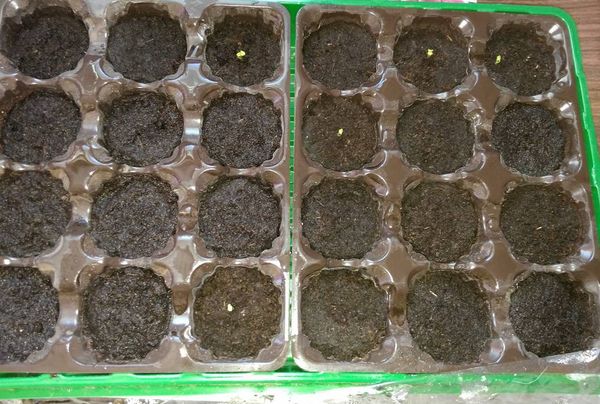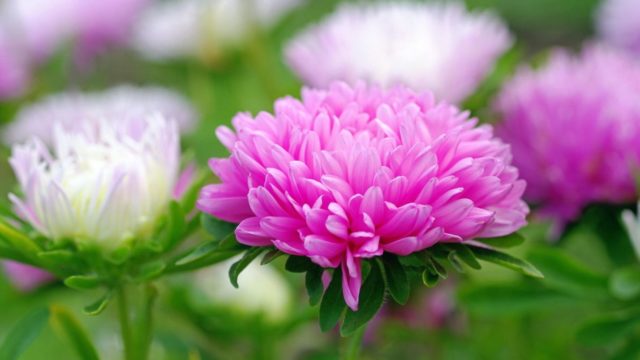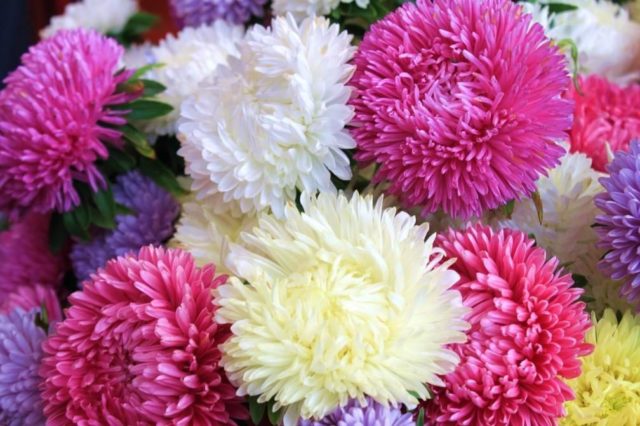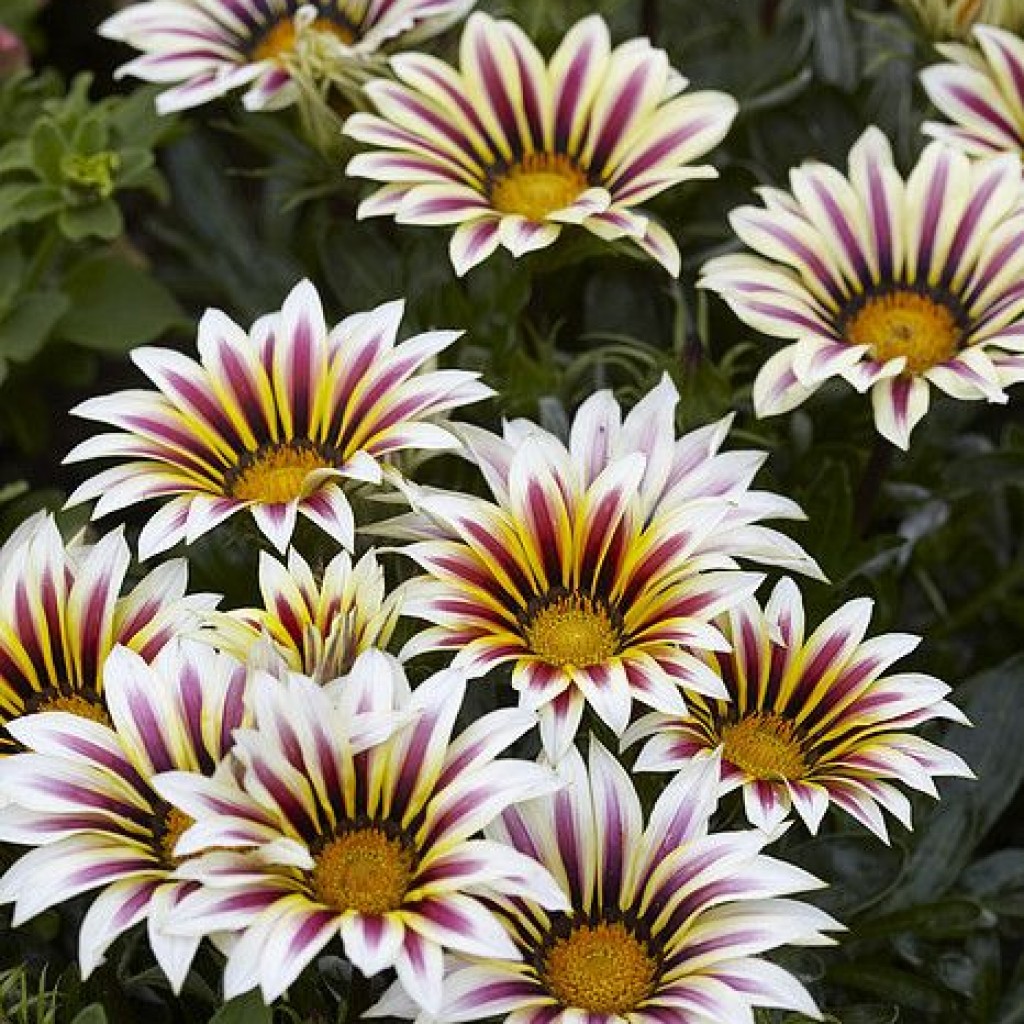Caring for lilies in the garden
How to care for lilies
Caring for lilies includes watering, feeding, removing wilted flowers and preparing for wintering. In one place, lilies grow for 3-5 years, and then the bulbs become overgrown with children, and they need to be dug out, separated and planted. In the first year after planting, professionals advise to remove some of the buds that have appeared so that the plant accumulates strength for full flowering in the next season. The stems of some varieties of lilies need to be tied to a support, otherwise they can break from the wind.
The methods of caring for different types of lilies, of course, differ in the degree of complexity, but in general this culture is unpretentious and unpretentious.
Watering lilies
Watering lilies begins in early spring, but it is especially important that the soil receives enough moisture in hot and dry weather. Throughout the entire growing season, lilies need moderate soil moisture, but in the first half of summer - during the period of active growth and flowering, when the bulbs accumulate nutrients for wintering - watering for plants is especially important
Watering is carried out with cold water under the root, in the early morning or afternoon, and after moistening it is advisable to loosen the soil around the plants and remove weeds. If you want the moisture in the soil to last longer, and there are fewer weeds, mulch the surface of the flower garden with organic materials suitable for plants. When watering a plot with lilies, two rules must be followed:
- do not allow water to stagnate in the roots;
- do not allow the soil to dry out too much.
During the period of prolonged rains in early to mid-autumn, the area with the Eastern hybrids is covered with a film and removed only in dry weather. This is done so that the bulbs of this species overwinter in dry soil.
Feeding lilies
For the first time, lilies are fed even in the snow, before the shoots appear, with a complex mineral fertilizer, for example, Nitroammofoskoy, at the rate of 30 g / m². The second feeding with the same fertilizer and in the same quantities is carried out during the budding period, and after flowering lily need potassium-phosphorus fertilizers, which will accelerate the ripening of the bulbs. They are introduced in the form of 10 g of superphosphate and 20 g of calcium sulfate per 1 m². Lilies respond well to feeding with an ash extract (100 g of ash per 10 liters of water), but it is easier to just sprinkle ash on the surface of the site.
Growing gatsania from seeds at home

African chamomile has a taproot system and does not tolerate transplanting well, therefore it is recommended to plant it in separate tall pots (at least 10 cm high). Good results are obtained by placing the seeds in peat pots or tablets. It is not necessary to take out seedlings from such a container before transplanting into the ground, peat perfectly rots in the soil and does not interfere with the roots to grow.
Peat gatsaniya tablets are chosen 4 cm in diameter. Before sowing, they are immersed in warm water, where they swell and increase in size.
It is convenient to keep the seedling tablets in a deep tray, where water is poured for irrigation.
Important! Drainage holes must be made in the seed containers. Stagnation of water in the substrate has a detrimental effect on the roots of gatsania .. As a seedling soil, you can buy a ready-made universal substrate in a store or prepare a mixture yourself
The soil for the flower needs loose and light, with medium acidity. For example:
As a seedling soil, you can buy a ready-made universal substrate in the store or prepare the mixture yourself. The soil for a flower needs loose and light, with medium acidity. For example:
- compost or sod humus - 1 part;
- coarse sand or perlite - 1 part;
- high-moor peat - 3 parts.
Another option for gatsania soil: vermiculite, coconut fiber and vermiculite in equal proportions.

To destroy the spores of fungi and pathogens of other diseases, the components of the future substrate are calcined in the oven or steamed for 30 minutes in a water bath. You can pour the soil mixture with Fundazol or Fitosporin. You can use a raspberry potassium permanganate solution for etching.
How to plant gatsaniya seeds:
- The seedling cups are filled with moist soil and compacted well.
- African chamomile seeds are laid out in 2-3 pieces in the center of the container (when sown in common boxes, the distance between the seeds is 2 cm). From above, the seeds are covered with clean sand by 2-3 mm.
- The surface of the soil is sprayed with warm water and the crops are covered with film or glass.
- Before germination, the seedlings are removed to a place where the temperature does not drop below +22 degrees.
The first loops of seedlings may appear in pots after 3 days, if the sprouts do not appear after 12-14 days, sowing must be repeated. The container with the seedlings is transferred to a well-lit windowsill or a special lamp is suspended above them.
On a note. If all the sown seeds have sprung up in the glass, then the extra seedlings are removed. With thickened sowing, gating grows poorly and stretches.
Gatsaniya picking at home
After 7 days, the seedlings dive. The soil should be prepared the same as for sowing.
Carefully remove each plant, taking care not to damage the roots. Small damage may not affect the growth of a young plant, but a strong breakage of roots can lead to the death of young shoots.
They are carefully transplanted, watered and placed in partial shade.

Attention!
Only after 10 days gatsaniya can be fed with complex mineral fertilizers. Further feeding is given every 15 days.

It is imperative to loosen the soil to exclude the formation of a crust, otherwise the seedlings will not be able to grow and develop normally. Before transplanting a culture into open ground, the flower will need to be hardened, for this, the seedlings should be taken out to the balcony or a cool terrace. First, for 15-30 minutes, then the time should be gradually increased. Hardening is the key to good survival when planting in the garden. This procedure should not be neglected.
Garden, vegetable garden and flower garden tips
When to sow flowers for seedlings in 2020 according to the lunar calendar in Siberia
Planting beets in spring sowing when to sow how to plant correctly
Planting melons and watermelons outdoors with seeds
Gatsania is grown from seed and is very fragile so you need to be very careful when planting.
Harvesting
Collecting greens is carried out in April - May: before the lovage releases a flower stalk. From this moment, and the entire flowering period, the plant becomes poisonous.
How are lovage leaves harvested:
- The greens are cut off, laid out in a thin layer in a dark place. After drying, they are placed in a tightly sealed container.
- The cut leaves are frozen with a finely chopped mass. It is not allowed to defrost and re-freeze the mass.
- The leaves, crushed into a paste, are mixed with olive oil. The resulting mass is laid out in ice molds, frozen. Add 1 cube to soups, meat and fish dishes.
The period for harvesting the root is October - November. At this time, many useful substances accumulate in it. The rhizome is dug up, washed, finely chopped or grated, dried or placed in the freezer.
When buying lovage in a store or pharmacy, you need to pay attention:
- for the safety of the packaging;
- shelf life.
To view a review from a personal plot about a medicinal plant:
When growing lovage outdoors, the crop yield is higher than at home. It is difficult to get a large root in a pot. With any type of cultivation, the spice needs to be cared for.
Choosing a suitable place on the site
An open, well-lit area is ideal for gating.You do not have to be afraid that the plant will be in direct sunlight, because this flower is very light-requiring and drought-resistant. The most favorable conditions for the growth of gatsania are hot sunny weather. The seedlings are transferred to open ground when the night temperature reaches 10 ° C. Before planting, it is advisable to fertilize the land with humus or mineral fertilizers. Small pits are prepared for seedlings and transplanted together with peat pots. If the pick was made into plastic cups or another container, then with the help of a spatula, the seedlings are carefully taken out without damaging the root. It is advisable to observe the distance between the bushes of the order of 20-30 cm.

The distance between gatsania bushes is about 20-30 cm.
Gatsania forms a compact shrub 20-25 cm wide and high. The flowers are large enough. On the site, this plant looks great both as separate small beds, and planted without much order. It is not whimsical to care for, is not afraid of drought, does not like an excess of moisture. It goes well with other types of ornamental crops. One of the features is the curling of the petals into a bud at night. However, more recently, breeders have bred a variety that is not picky about the sun's rays, which makes it possible to grow this flower and residents of more northern regions. With its flowering, it will delight the eye until the beginning of autumn.
Care for gatsania seedlings

African chamomile is grown on a light and cool (+ 18..20 degrees) windowsill. Drafts from the vents or crevices of window frames should be avoided.
Watering the plant needs regular. The soil in the pot should be slightly damp, but there should be no excess water in the pan. Water for irrigation is used at room temperature and settled. It is useful to water the sprouts with rain or melt water.
During the period of growing gatsania seedlings, it is fed twice full mineral fertilizer for flowers (Kemira, Pocon). It is necessary to choose the composition with the minimum nitrogen content. This element contributes to the excessive growth of greenery in seedlings to the detriment of the development of the root system.
If the culture was sown in a common seedling box, at the age of 4 true leaves, it is seated in separate glasses. In order not to damage the root system, it is convenient to use a fork, picking up a small sprout with it and pulling it out of wet soil.
Important! When transplanting, the central root of the gatsania is not pinched!
To make the plants recover faster after the stress of transplanting, the seedlings are sprayed with Epin's solution.
2 weeks after transplantation, gatsaniya is fed with phosphorus-potassium fertilizers and transferred to a cool room, with an air temperature not higher than +18 degrees. It can be a glazed balcony or a greenhouse.
Why is gatsania not blooming?
This question is asked by some gardeners, who have only foliage on the bush. There may be several reasons for the lack of flowering:
- insufficient lighting;
- fertilizing with fertilizers, which contain a lot of nitrogen;
- late sowing;
- excess watering.
Subject to all the rules for the care and cultivation of gazania, bright flowers will bloom on your flower bed all summer until late autumn. Unfortunately, in the winter cold in our climate, they do not survive, but you can save the bush if you dig it up and transplant it into a pot. In winter, the plant is kept in a cool place (+8 .. + 10 degrees) and make sure that the soil does not dry out. In the spring, the shoots are cut in half and the African chamomile is planted in a flower bed in open ground.
Useful articles from the "Floral" section:
Useful articles for the gardener:
- Prohibited plants for growing on the site: what can not be grown?
- When to dive tomato seedlings in 2020: auspicious days
- Planting cauliflower in 2020: sowing dates, cultivation and care
- Pepper: growing and care
- Crafts for a summer residence and a garden with your own hands: how to make, ideas, photos
- When to harvest walnuts: timing, storage
- Mushroom picker calendar 2020: when to collect, auspicious days
- Autumn work in the garden and garden: what needs to be done
- Do I need to dig a garden before winter: timing, what fertilizers to apply
- Apricot compote for the winter: delicious and simple recipes
Agrotechnics of gatsania
The plant reproduces mainly by seeds. But for especially valuable terry varieties, propagation by cuttings is possible.
Cuttings
Cuttings of gatsania begin no earlier than mid-summer.
Cuttings begin not earlier than mid-summer, when the mother bush is already sufficiently formed and has gained a deciduous-stem mass.
- A side shoot is selected.
- Cut to a length of at least 10 cm, obliquely.
- The cut is processed with a stimulant - root.
- The lower leaves break off.
- The stalk is planted in a suitable container (about 12 cm in diameter is enough).
- The soil around the cutting is moistened.
- For rooting, the plant is sent to conditions: + 18 ° C, indirect sunlight, ventilation, humidity about 60%.
- Watering is necessary regularly, after the topsoil has dried by 3-4 cm.
- The stalk will take root for a long time - 1.5 - 2 months. Then the bush is kept in indoor or greenhouse conditions until the spring planting in the garden.
Seed reproduction
It is not recommended to sow gatsaniya directly into the ground for several reasons.
- Seedlings develop slowly.
- Seedlings are afraid of spring cold.
- Flowering occurs only 3-4 months after sowing the seeds.
The best way to grow ganation is seedlings
Therefore, the only optimal way to get a blooming healthy gatsaniya on the site as early as possible is to grow seedlings.









































